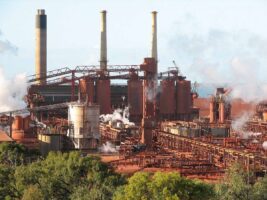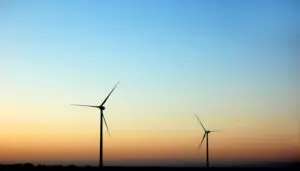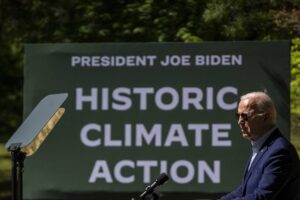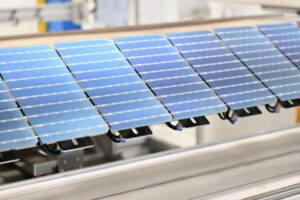Scientists have recorded a surprising rise in atmospheric carbon dioxide and methane levels over 2020, seeming to contradict predictions that the pandemic would see a temporary slowdown in the build up of greenhouse gases in the atmosphere.
Research by United States government agency the National Oceanic and Atmospheric Administration (NOAA) found average surface level atmospheric CO2 levels hit an all-time high of 412.5 parts per million (ppm), up 2.6 ppm on 2019 levels.
That was the fifth highest increase on record, after 1987, 1998, 2015 and 2016. Atmospheric CO2 levels are now the highest they have been for 3.6 million years. Back then sea levels were 24 metres higher than they are today, and the world was about 4 degrees hotter.
The rise came despite projections by the Global Carbon Project that CO2 emissions would fall by around 7 per cent as a result of the pandemic. A fall in emissions would not necessarily mean a reduction in CO2 atmospheric concentrations, as billions of tonnes of new fossil-based CO2 were still pumped into the atmosphere in 2020. But the 7 per cent reduction might have been expected slow down, rather than speed up, the rate of increase.

Equally surprising was the rise in methane levels, which jumped by a record 14.7 parts per billion, the highest annual rise since records began in 1983. Methane (CH4) is less abundant than CO2 in the atmosphere, but is a much more potent greenhouse gas, having about 28 times the heat-trapping potential of CO2.
Anthropogenic methane emissions come from a mixture of agriculture – particularly cow and sheep belches and rice paddies – and the fugitive emissions from fossil extraction (natural gas is methane, and coal and oil, which are hydrocarbons, also produce methane).
Preliminary evidence suggests the extra methane build-up came from biogenic causes – which could be from agricultural emissions or from natural sources like wetlands – rather than from fugitive fossil fuel emissions.

“Human activity is driving climate change,” said Colm Sweeney, assistant deputy director of NOAA’s Global Monitoring Lab. “If we want to mitigate the worst impacts, it’s going to take a deliberate focus on reducing fossil fuels emissions to near zero – and even then we’ll need to look for ways to further remove greenhouse gasses from the atmosphere.”
Stefan Arndt, a professor of ecosystem and forest sciences at the University of Melbourne and an expert in the carbon cycle, said the near-record rise in CO2 concentrations was unexpected.
“A lot of the projections, particularly by the Global Carbon Project, were predicting quite a substantial decline in CO2 emissions,” he said.
“I can’t see where there would be any inertia in the system. It’s always an input output question. I find it surprising. I would have expected a slowdown.”
He said the most obvious explanation therefore was simply that emissions had not slowed down as much as predicted.
He said the rise in methane levels was less surprising, because their main causes – from agriculture and fossil fuel projects – would have continued at much the same level through the pandemic.
Asked whether the excess methane could have been released from underneath permafrost that are melting due to climate change – one of the more apocalyptic, if far from settled, climate change scenarios – he said it was difficult to say, because measurements were extremely limited. But he said the isotopic profile of the methane, that linked it to biogenic origins rather than fossil fuels, would be consistent with such emissions.
Pep Canadell, chief research scientist at the CSIRO Climate Science Centre and executive director of the Global Carbon Project, said: “The impacts of COVID-19 on the economy have resulted in a reduction in emissions, 2.5 billion tonnes less in 2020, to be precise, but CO2 will continue to accumulate in the atmosphere and break new records until the day we no longer produce emissions.”









